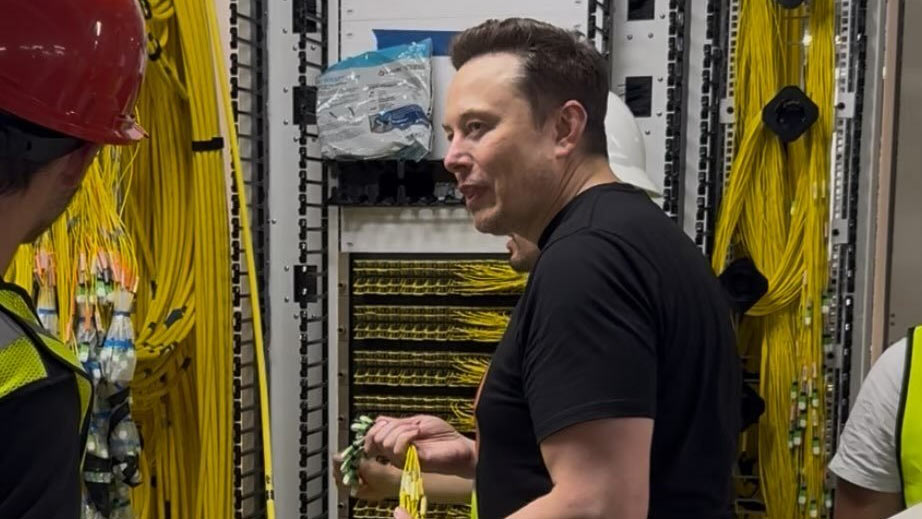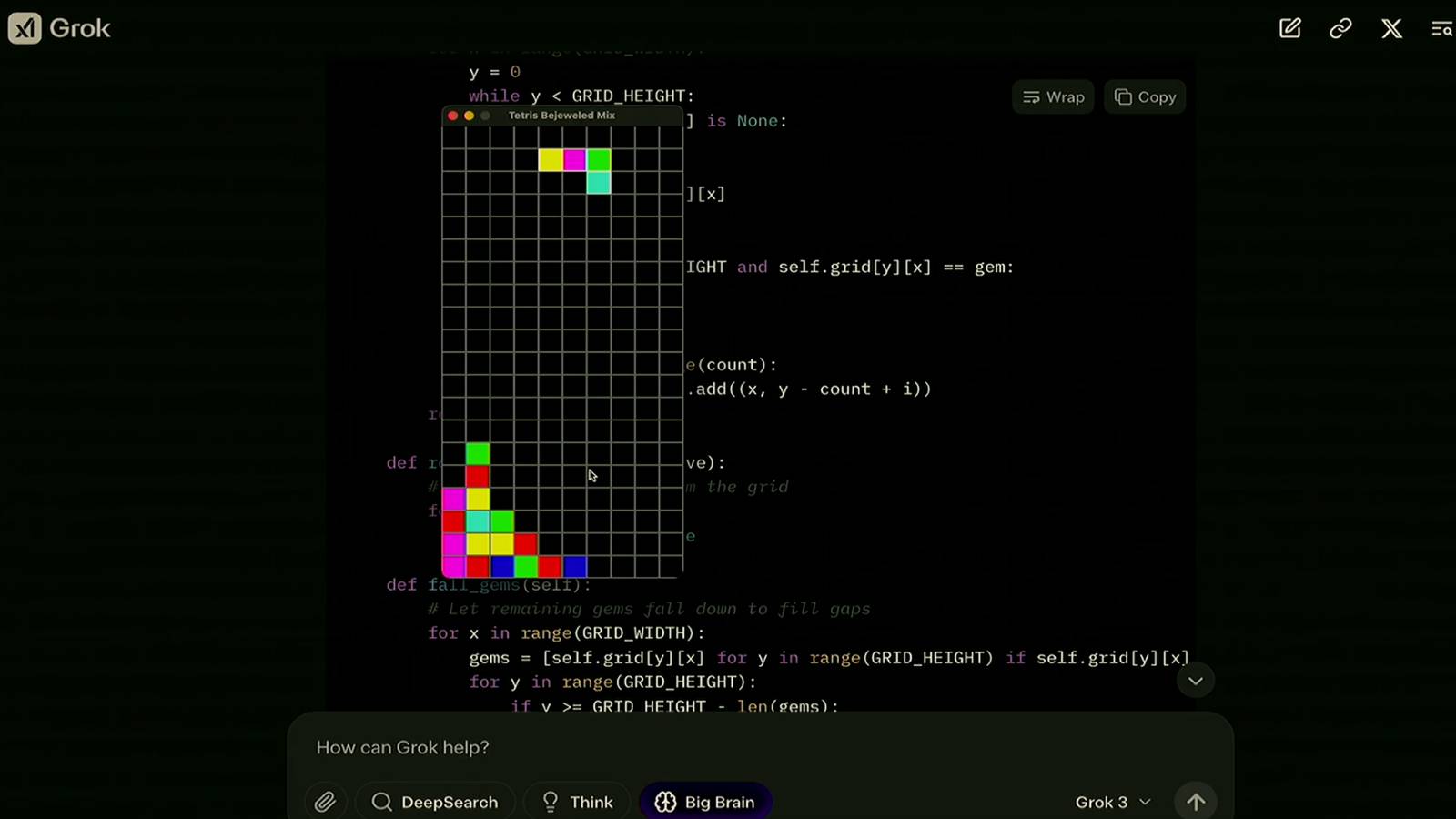
During a broadcast showcasing the newly-launched Grok 3, Elon Musk and xAI announced their intentions to begin building a new games studio. While details remain light for now, the developers showcased that Grok 3 can generate a facsimile of Tetris using Python.
"We're launching an AI gaming studio at xAI. If you're interested in joining us in building AI games, please join xAI," Musk said during the live stream.
No further details were given to the public regarding the nature of the studio itself, its intentions, the direction that xAI might take in what it seeks to do, or what it might develop. A social media post from an xAI employee showcased that the fledgling team currently consists of nine members — including Musk himself.
Elon Musk's xAI is going to start an AI game studio to make games pic.twitter.com/R4p7WSrkxnFebruary 17, 2025
In another example posted by a user, Grok 3 can generate a version of the basic 2D title Bubble Trouble, featuring physics, collisions, and a basic 2D UI. However, the user's prompt revealed that Grok wasn't quite able to generate the retro-inspired sound effects that they had described.
Musk further chimed in to mention that xAI's new game studio was working on a way to "integrate photo-realistic graphics" into AI games.
Btw, you can improve the graphics resolution simply by asking Grok to do so. We’re working on being able to integrate photo-realistic graphics into AI games for the @xAI game studio. https://t.co/hLSgr9KdjwFebruary 18, 2025
Musk also claims that Grok can also improve the graphics resolutions of titles simply by prompting the LLM. However, it's not explained if this has to be done in a game that's currently being created by Grok itself or if it might debut as a discrete technology, like Nvidia's DLSS Super Resolution or AMD's FidelityFX Super Resolution.
However, whether or not the AI-grounded studio can create "a dynamically generated video game" that is more complex than the simple 2D titles that Grok 3 can seemingly produce remains to be seen, especially considering Musk's goal of implementing photo-realistic graphics.

While the xAI games studio is clearly in its early stages, Grok 3, xAI's latest LLM, has showcased impressive benchmarks. Both the Grok-3 and Grok-3 mini models can outperform the likes of GPT-4o, Gemini-2 Pro, DeepSeek-V3, and Claude 3.5 Sonnet across various categories.
The LLM was trained using 100,000 Nvidia H100 GPUs at the Colossus Supercluster in Memphis, utilizing parallelized training for development.
While details about Musk's new initiative remain muddy, some mainstream gaming studios are beginning to adopt mainstream AI into development workflows. Gaming giant Capcom shared in January that it's using generative AI to come up with "unique ideas" for background assets in collaboration with Google Cloud. The developer is said to be utilizing tools such as Gemini Pro, Gemini Flash, Imagen, and Vertex AI.
Right now, Grok 3 is enjoying the limelight, so it may be a while until we hear from whatever xAI is cooking up. Musk intends to seemingly build a fully-fledged games studio, instead of tools for developers to utilize and implement into their workflows.
The billionaire's intent to scale up the Colossus supercluster to over a million GPUs might speed up the development of newer AI models in the future, aiding the efforts of the fledgling studio.







